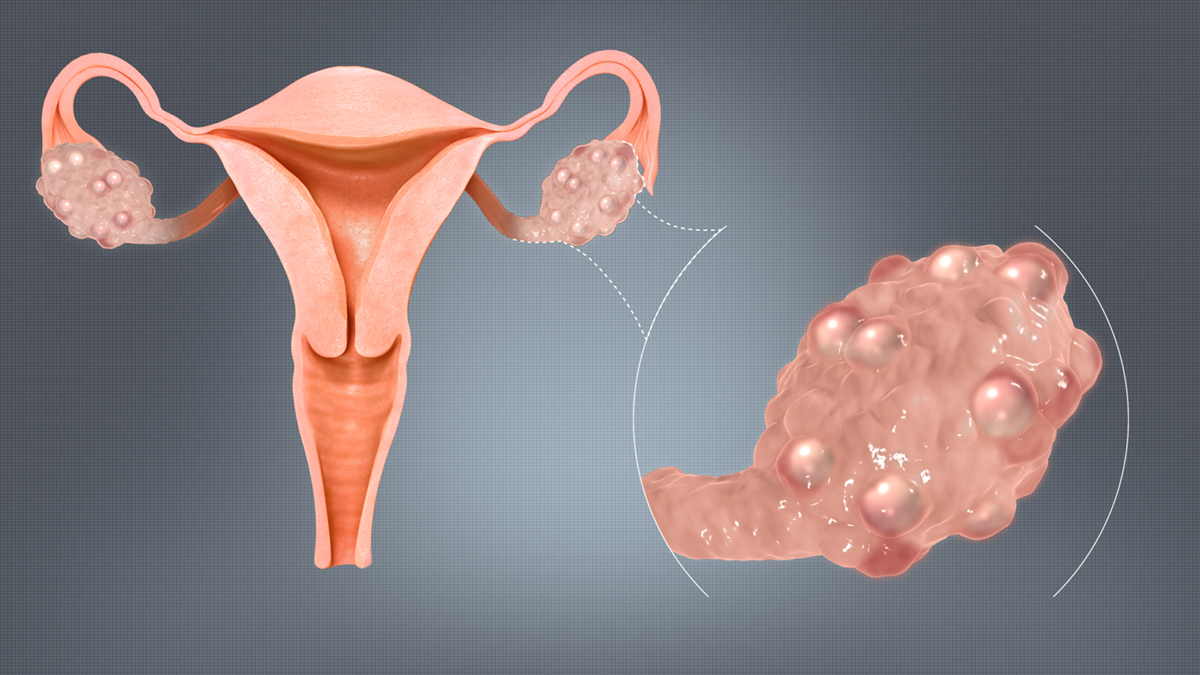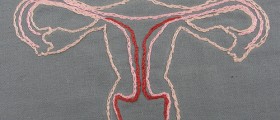
Definition of Polycystic Ovary Syndrome (PCOS)
Polycystic ovary syndrome is a type of genetic hormonal disorder which is characterized by irregular or missed periods, strong effects of male hormones, and in some cases diabetes and high cholesterol. Polycystic ovaries occur when the ovaries produce an overflow of male hormones either because of the overproduction of luteinizing hormone, decreased production of sex hormone binding globulin, and/or increased levels of insulin. There have also been studies that suggest homosexual women are more likely to be affected by the disorder than their heterosexual counterparts. The polycystic ovary syndrome is relatively widely spread, affecting almost 1 in 5 women in their reproductive years. It should be noted that not all women with polycystic ovaries have the polycystic ovary syndrome. The cause of polycystic ovary syndrome is in most cases genetic, but the exact malfunctioning gene has not been identified yet. The disorder can be passed on from either parent, with the sons only being the carriers while the daughters will develop the disorder to some degree.
Signs and Symptoms of PCOS
The most common signs of polycystic ovary syndrome are insulin resistance, excess amount of male hormones, sterility, and period related problems. The insulin resistance is distinguished by excess weight and Type 2 diabetes. When it comes to the strong presence of male hormones, individuals affected by them usually have an overabundance of hair, blemishes, and have repeated periods. On the other hand, some women with polycystic ovary syndrome have very few periods and in turn are unable to conceive. As the symptoms of the PCOS are disorders themselves, it is sometimes difficult to differentiate whether the high insulin levels are caused by the polycystic ovary syndrome or vice versa. The same is true of many other signs of the PCOS.
Differential Diagnosis
Various types of blood tests, laparoscopy, ultrasound, and medical history are some of the most common ways to diagnose the polycystic ovary syndrome. When administering blood tests, medical care providers look for increased levels of male hormones, while laparoscopy discloses a fairly dense layer of white matter on the surface of polycystic ovaries. An ultrasound looks for follicles that have not developed enough to produce an egg, and are instead gathered up in the ovaries. In a normal menstrual cycle, the largest follicle releases an egg and is eventually dispersed after about two weeks. However, in women with PCOS there are 12 or more follicles in the ovaries that did not disperse nor did they mature enough to produce an egg for the cycle. One of the reasons why the follicles were not cultivated is the malfunctioning ovary which produced them in the first place. Consequently, polycystic ovaries are up to 3 times larger than normal. Lastly, a health care provider will want to know about the menstrual cycle history, the presence of excess hair, and body weight to be able to conclude with certainty that a patient is suffering from PCOS. Additional tests that may be performed include glucose tolerance testing, insulin level testing, and biochemical profiling.
Management of Polycystic ovary syndrome (PCOS)
Therapy options for treating PCOS depend on the underlying symptoms, but mostly focus around stabilizing the insulin levels, dealing with excess hair, acne and menstrual problems, as well as treating the sterility. However, many clinicians are concerned with the fact that there isn’t enough scientific data available that compares distinctive treatments for PCOS. Most will recommend medications, and a change in nutritional habits. The first thing that most medical care workers will prescribe is one of the insulin sensitivity drugs, such as glitazone, as it has manifested positive effects on patients. Further, if the patients have weight problems, they will be put on a strict diet for weight loss will result in the balancing of reproductive processes, i.e. menstruation and ovulation. The type of diet that a patient will be put on should be personalized to meet the individual needs as many women find it challenging to achieve significant weight loss that would actually impact the PCOS. Many opt for the reduction of the carbohydrates, increase in fruit, vegetables and whole grains intake coupled with strict physical activity regimen. In addition, there are other aspects of dealing with PCOS, which for the most part include the treatment of sterility, acne, and excessive hirsutism. When it comes to dealing with sterility that is PCOS induced, the options are about the same as they are for sterility caused by any other factors. There is a variety of ovulation-inducing medications that medical care professionals will opt for as a way to try and treat infertility. In case the patient does not respond to drugs, numerous reproductive assistance programs are also available, such as follicle stimulation or in vitro fertilisation. Further, in the case of treating acne and excess hair growth, oral contraceptives are a good way to start. Also, the drugs that reduce insulin resistance often reduce hair growth as well. There are also various dermatological treatments available for both acne and hirsutism, and those are in most cases individually prescribed.

















Your thoughts on this
Loading...